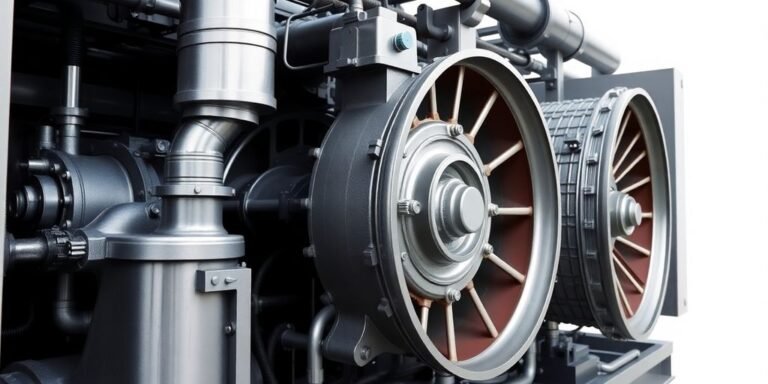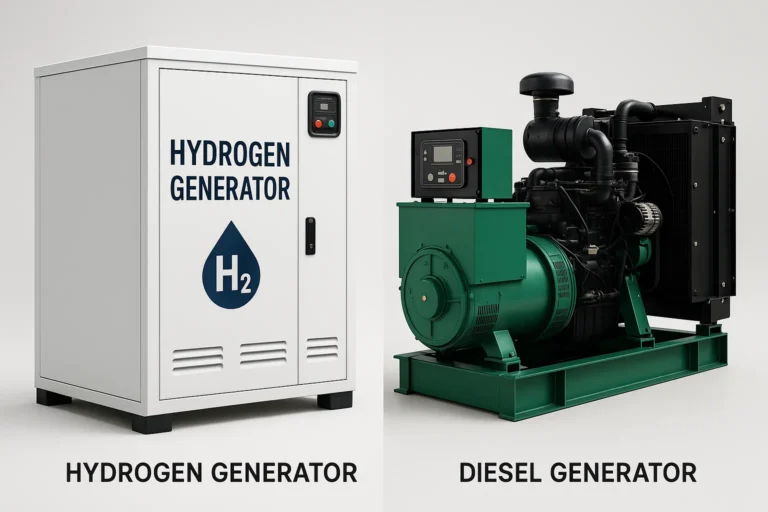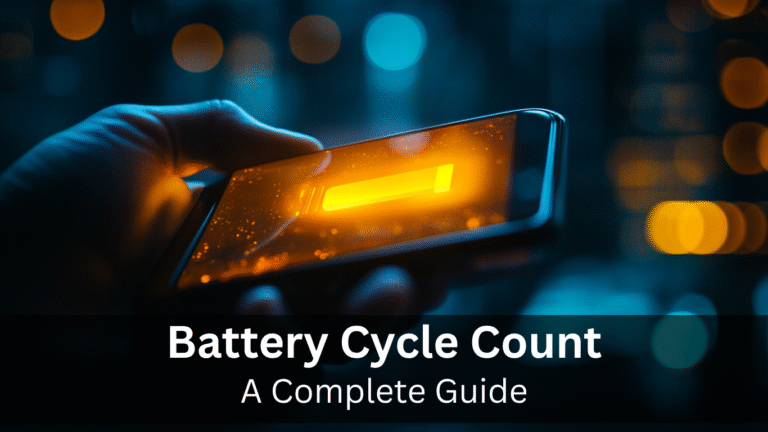1000 Cycles Battery vs. 500 Cycles: Which One Is Better for You?
When it comes to batteries, one of the most important factors to consider is the number of cycles they can handle. A 1000 cycles battery can last much longer than a 500 cycles battery, but is it really worth the extra cost? In this article, we’ll break down the differences between these two types of batteries, helping you figure out which one is the best fit for your needs.
Key Takeaways of 1000 Cycles Battery vs. 500 Cycles
- A 1000 cycles battery offers a longer lifespan, making it ideal for heavy users.
- While a 500 cycles battery is cheaper upfront, it might not last as long in the long run.
- Consider your usage habits: if you use your device lightly, a 500 cycles battery might suffice.
- Performance metrics like capacity retention and energy efficiency are crucial in making your choice.
- Proper maintenance and charging practices can significantly extend the life of any battery.
Understanding Battery Cycles

What Are Battery Cycles?
Okay, so what exactly is a battery cycle? Think of it like this: it’s one complete charge and discharge of your battery. It’s not just about plugging it in for a few minutes; it’s about using the battery’s power and then fully recharging it. A cycle happens whether you drain the battery from 100% to 0% or use, say, 50% of its capacity and then recharge it twice. Both scenarios count as one cycle. It’s all about the total amount of energy moved in and out.
How Are Battery Cycles Measured?
Measuring battery cycles isn’t always straightforward. Manufacturers use testing equipment to simulate real-world usage and track how many times a battery can be fully charged and discharged before its performance drops significantly. The performance of a battery is measured in capacity, a leading health indicator.
However, there’s no single standard for what constitutes a ‘full’ cycle or when a battery is considered ‘degraded.’ Some devices might show a drop in battery health after a certain number of cycles, but this can be based on models and not actual measurements. It’s also worth noting that partial discharges contribute to cycle count. Discharging the battery 10 times by 50% gives the device the energy equivalent to 5 full 100% discharge, or 5 cycles.
Factors Affecting Battery Cycle Life
Lots of things can impact how long your battery lasts. It’s not just about the number of cycles it’s rated for. Here are some key factors:
- Depth of Discharge (DoD): Draining your battery completely (0%) more often can shorten its lifespan compared to shallow discharges (e.g., only using 20-30% before recharging).
- Temperature: Extreme heat or cold can damage batteries and reduce their cycle life. Try to keep your devices at room temperature as much as possible.
- Charging Habits: Using fast chargers all the time might be convenient, but it can generate more heat and potentially degrade the battery faster. Consider using slower, standard chargers sometimes. Optimal charging practices can extend battery life.
- Storage Conditions: If you’re storing a device for a long time, it’s best to keep the battery at around 50% charge in a cool, dry place. Avoid storing devices with fully charged or fully discharged batteries.
Battery health isn’t just about the number of cycles. It’s also about how you use and care for your device. Small wearable batteries deliver about 300 cycles whereas modern smartphones have a cycle life requirement is 800 cycles and more. Pay attention to temperature, charging habits, and storage to maximize your battery’s lifespan.
Advantages Of A 1000 Cycles Battery

Longer Lifespan
A 1000 cycles battery is designed to last significantly longer than a 500 cycles battery, making it a worthwhile investment for many users. This extended lifespan translates directly into fewer replacements over the years. Think about it: if you’re using a device daily, a battery with more cycles will keep it running for a longer time before it needs replacing. For example, in off-grid solar setups, the longevity of a 1000 cycles battery is a huge advantage.
Cost-Effectiveness Over Time
While the initial cost of a 1000 cycles battery might be higher, its extended lifespan often makes it more cost-effective in the long run. You’re essentially paying more upfront for a product that will last twice as long, potentially saving you money on replacements. Consider this:
- Fewer replacements needed
- Reduced downtime for equipment
- Lower long-term expenses
Choosing a 1000 cycles solar battery for off-grid living can be a smart financial decision. Although the initial investment is higher, the reduced need for replacements and the extended operational life can lead to significant savings over time.
Better Performance Under Heavy Use
If you’re a heavy user who frequently drains and recharges your batteries, a 1000 cycles battery is the better choice. These batteries are built to withstand more frequent use without significant degradation in performance. This is especially important for applications like large-scale energy storage where the battery is constantly being cycled. A 1MWh battery comparison: 1000 cycles vs 500 cycles performance will clearly show the 1000 cycle battery maintaining capacity for longer under heavy use.
Benefits Of A 500 Cycles Battery
While a 1000 cycles battery might seem like the obvious choice, a 500 cycles battery has its own set of advantages, especially for certain users and applications. It’s all about finding the right fit for your specific needs.
Lower Initial Cost
One of the most significant advantages of a 500 cycles battery is its lower upfront cost. This can make it a more accessible option for budget-conscious consumers or those with less demanding power needs. The difference in price can be substantial, allowing you to allocate funds to other important components of your system. For example, when considering solar battery systems, the initial investment can be a major factor.
Sufficient For Light Users
Not everyone needs the extended lifespan of a 1000 cycles battery. If your daily usage is relatively light, a 500 cycles battery might be perfectly adequate. This is especially true for devices that aren’t used constantly or for backup power systems that are rarely called upon. Think of it like this:
- Occasional use devices (e.g., a rarely used power drill).
- Small backup systems for short outages.
- Users who upgrade their devices frequently.
Compact Size and Weight
In some cases, a 500 cycles battery can offer a more compact size and lighter weight compared to its 1000 cycles counterpart. This can be a crucial factor in portable devices or applications where space and weight are at a premium. Size matters, especially in mobile applications.
Choosing a 500 cycles battery isn’t about settling for less; it’s about making a smart, informed decision based on your actual needs and usage patterns. It’s about optimizing cost and form factor without sacrificing performance for your specific application.

Comparing Performance Metrics
Capacity Retention Over Time
Okay, so let’s talk about how well these batteries hold their charge over time. It’s not just about how many cycles you get, but also how much juice they can still deliver after all that use. A battery that starts strong but fades fast isn’t as good as one that holds steady, even if it has fewer cycles overall. Think of it like this: a 1000-cycle battery might still give you 80% of its original capacity after those cycles, while a 500-cycle battery might only give you 60%. That difference can really add up, especially if you’re relying on it for important stuff.
Depth of Discharge Impact
Depth of Discharge (DoD) is a big deal. It’s basically how much of the battery you use each time you charge it. Using only a little bit of the battery’s capacity before recharging (shallow discharge) is way better for its lifespan than draining it completely (deep discharge). Batteries degrade faster when they’re constantly pushed to their limits.
Here’s a simple table to illustrate how DoD affects battery cycle life:
| Depth of Discharge (DoD) | 500-Cycle Battery (Approx.) | 1000-Cycle Battery (Approx.) |
|---|---|---|
| 80% DoD | ~300 | ~750 |
| 60% DoD | ~600 | ~1,500 |
| 40% DoD | ~1,000 | ~3,000 |
| 20% DoD | ~2,000 | ~9,000 |
| 10% DoD | ~6,000 | ~15,000 |
Energy Efficiency
Energy efficiency is another key factor. It’s about how much of the energy you put into the battery actually gets used, and how much is lost as heat or other inefficiencies. A more efficient battery will not only last longer but also save you money on electricity bills. Batteries aren’t perfect, and some energy is always lost during charging and discharging. But a battery with better energy efficiency will minimize those losses, giving you more power for your buck. To help with this, you can use a battery charge calculator to monitor your battery’s health.
It’s important to consider that a battery’s performance isn’t just about the number of cycles it’s rated for. Factors like temperature, charging habits, and the type of device it’s used in can all have a big impact on its actual lifespan and efficiency. So, while the cycle rating is a good starting point, it’s not the whole story.

Choosing The Right Battery For Your Needs
Assessing Your Usage Patterns
Okay, so you’re trying to figure out which battery is best. First things first, what are you actually using it for? Is it for a power tool you use every day, or just a flashlight for emergencies? Understanding how often and how intensely you use your devices is the first step. If you’re a light user, you might not need the fancy 1000 cycle battery. But if you’re constantly draining and recharging, that extra lifespan could be a lifesaver.
Evaluating Cost vs. Benefit
Let’s talk money. A 1000 cycle battery will probably cost more upfront. But think about it long-term. Will you end up buying two 500 cycle batteries in the time that one 1000 cycle battery lasts? Do the math! Sometimes, the cheaper option ends up costing more in the long run. Here’s a simple table to illustrate:
| Battery Type | Initial Cost | Lifespan | Total Cost Over 2000 Cycles |
|---|---|---|---|
| 500 Cycle | $20 | 500 | $80 |
| 1000 Cycle | $35 | 1000 | $70 |
Considering Environmental Factors
Think about where you’ll be using the battery. Extreme temperatures can affect battery life. Also, consider the environmental impact. Disposing of batteries isn’t great for the planet, so a longer-lasting battery means less waste.
Choosing a battery isn’t just about price and lifespan. It’s about making a responsible choice that fits your lifestyle and minimizes your impact on the environment. Every little bit helps!
Real-World Applications
Best Uses For 1000 Cycles Batteries
Okay, so you’re wondering where these long-lasting batteries really shine? Think about devices you use a lot, every single day. We’re talking smartphones for heavy users, laptops for people who work on the go, and power tools that contractors rely on. These are the perfect candidates for 1000 cycle batteries.
- High-drain devices benefit immensely.
- Gadgets that are frequently charged and discharged.
- Equipment where battery replacement is a hassle.
Investing in a 1000 cycle battery for frequently used devices can save money and reduce electronic waste in the long run.
Ideal Scenarios For 500 Cycles Batteries
Now, let’s talk about the 500 cycle batteries. These are great for devices that don’t see as much action. Think of your backup phone, a rarely used tablet, or maybe a remote control. They’re also good for things where you might upgrade the device before the battery wears out anyway. The battery lifespan is still decent, just not as extreme.
- Low-usage electronics.
- Devices with short lifecycles.
- Applications where initial cost is a major concern.
Industry Trends and Innovations
Battery tech is always changing. We’re seeing a push for more sustainable and efficient batteries across the board. Solid-state batteries are on the horizon, promising even longer lifespans and improved safety. Plus, there’s a growing focus on recycling and repurposing old batteries to reduce environmental impact. It’s a pretty exciting time for battery development!
| Trend | Description |
|---|---|
| Solid-State | Next-gen batteries with increased energy density and safety. |
| Recycling Programs | Initiatives to recover valuable materials from end-of-life batteries. |
| Wireless Charging | More convenient charging solutions, reducing wear on charging ports. |
Maintenance Tips For Longevity

Optimal Charging Practices
Okay, so you want your battery to last? It’s not rocket science, but there are definitely some things you can do. First off, avoid extreme temperatures like the plague. Don’t leave your device baking in the sun or freezing in the car. Heat is a battery’s worst enemy.
- Try to keep your battery charged between 20% and 80%.
- Avoid frequent full discharges.
- Use the charger that came with your device, or a reputable one.
Partial charging is better than always fully charging. It reduces stress on the battery’s components.
Storage Recommendations
If you’re planning on storing a device with a battery for a while, there are a few things to keep in mind. Don’t just toss it in a drawer and forget about it. That’s a recipe for disaster.
- Store the battery in a cool, dry place.
- Ideally, store it with around 50% charge.
- Remove the battery from the device if possible, especially for long-term storage.
Signs of Battery Degradation
Batteries don’t last forever, sadly. But knowing the signs of degradation can help you prepare and potentially mitigate further damage. Keep an eye out for these:
- Reduced battery life: If your device isn’t lasting as long as it used to on a single charge, that’s a big red flag.
- Swelling or bulging: This is a serious issue and could be dangerous. Stop using the battery immediately if you notice this.
- Overheating: If your device gets unusually hot during charging or use, it could be a sign of battery problems.
It’s also worth noting that LifePO4 batteries are known for their longevity, so consider those if you’re looking for something that will last.

Final Thoughts on Battery Cycles
So, which battery should you go for? If you need something that lasts longer and can handle more cycles, the 1000 cycles battery might be the way to go. It’s great for heavy users or if you want to keep your device for a long time. But if you’re just using it casually and don’t mind replacing it sooner, the 500 cycles battery could save you some cash upfront. Just remember, it all comes down to how you use your device. Think about your habits and needs before making a choice. In the end, both options have their perks, so pick what fits your lifestyle best.
Frequently Asked Questions
What does battery cycle mean?
A battery cycle is one full charge and discharge of a battery. For example, if you charge a battery to 100% and then use it until it’s at 0%, that’s one cycle.
How long does a 1000 cycle battery last?
A 1000 cycle battery can last a long time, depending on how you use it. If you use it fully every day, it might last about 2-3 years.
Are 500 cycle batteries cheaper?
Yes, 500 cycle batteries usually cost less upfront than 1000 cycle batteries, but they might not last as long.
Can I use a 1000 cycle battery for light use?
Yes, you can use a 1000 cycle battery for light use. It will still work well, but you might not need that extra capacity.
What affects how long a battery lasts?
Things like how deep you discharge it, temperature, and how often you charge it can all affect a battery’s lifespan.
Which battery is better for heavy use?
If you use your device heavily, a 1000 cycle battery is better because it can handle more charges and discharges without losing power.








